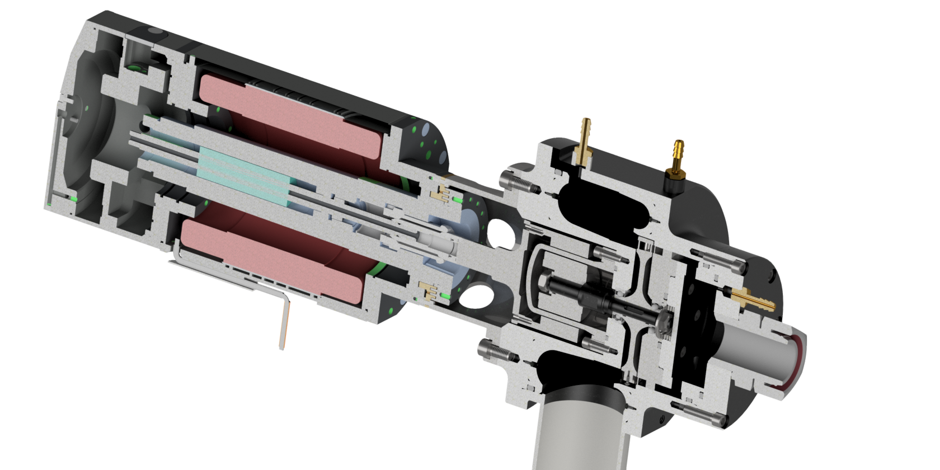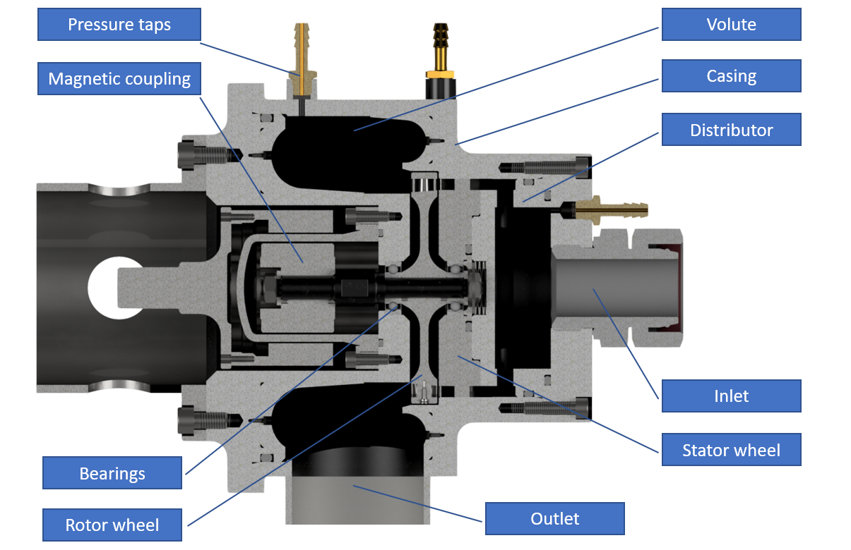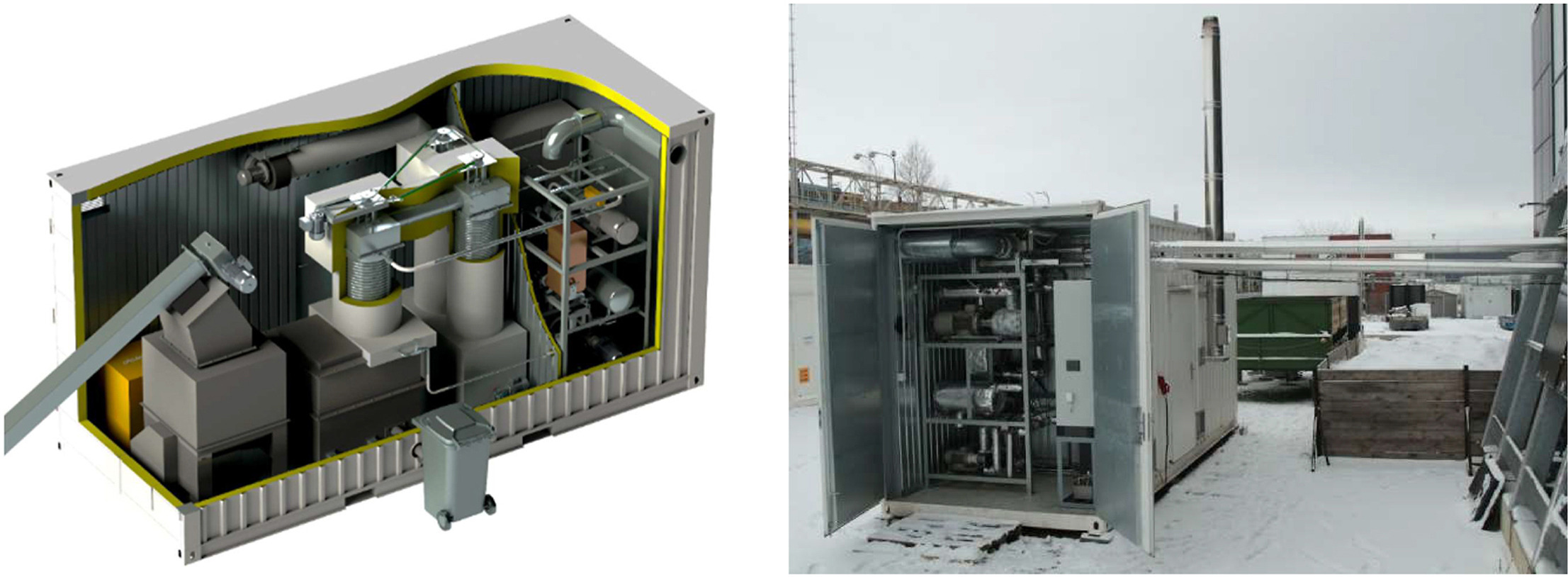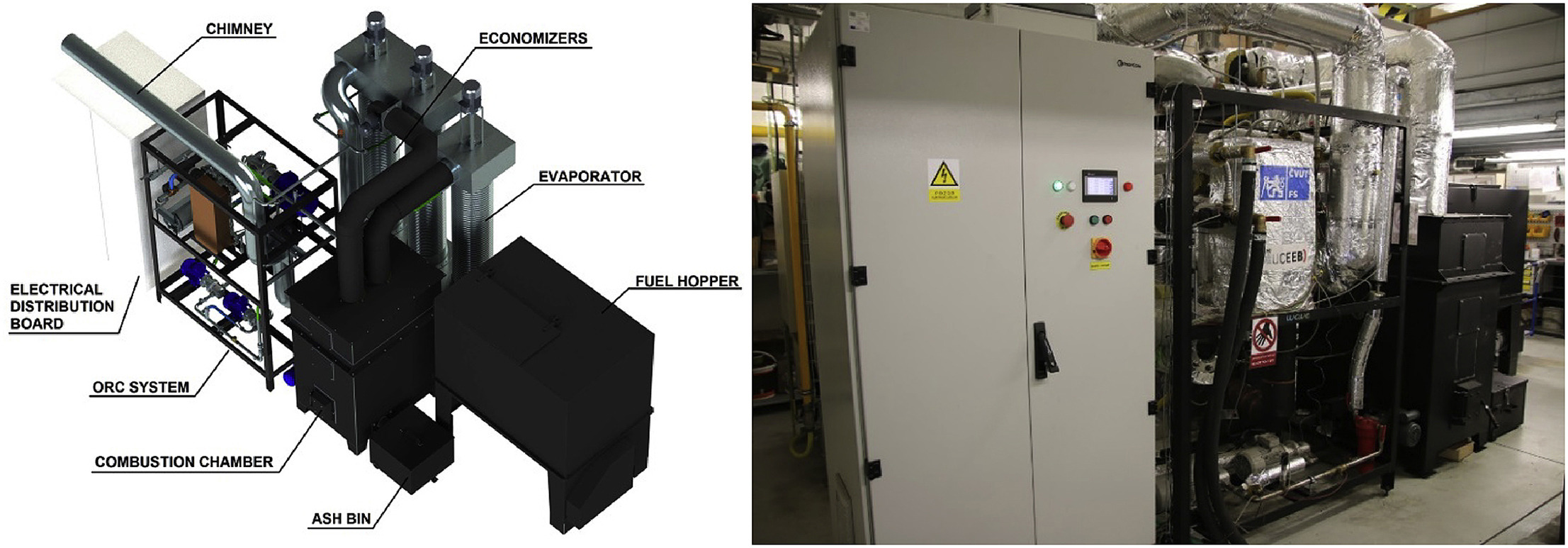Small-scale turbines for ORC power systems
supersonic turbine design and experimental testing for ORC CHP system
Organic Rankine cycle
(ORC) power systems became an unrivalled technical solution and an industrial standard in several applications, such as low temperature heat utilization in geothermal systems, combined heat and power (CHP) systems in the scale of several MWs down to hundreds of kW or waste heat recovery (WHR) power systems down to dozens of kilowatts. ORC systems in small to micro scale domestic CHPs face mainly economical barriers with economy-of-scale and large cost per installed kilowatt in micro scale units. [1,2]
When focusing on micro scale ORC CHP with electrical output in the order of less than 10 kW, many laboratory units and prototypes have been built and tested. Regardless of these R&D efforts, these micro scale ORC power systems mostly have not seen commercialization, the rest have not yet been proven to be economically feasible or are until today very scarce on the market. Mainly because their installations face economical barriers with economy-of-scale, since downscaling the ORC power systems to micro scale results in high specific costs associated with low initial production quantities and large cost per installed kilowatt. [3]
Another great reason which disfavours small scale ORC power systems is the lack of reliable, efficient and cost-effective expansion machines.
ORC expansion machines
For medium and large-scale ORC power systems, a turbine is the state-of-the-art vapour expansion device. For the small to micro scale systems though, volumetric expanders dominate the market. Main reason for that is the possibility to derive the design of a small volumetric expander from an off-the-shelf volumetric compressor, common machine in refrigeration and compressed air technology, connected with low investment costs and reliability. [4]
Turboexpanders for small scale ORC plants are nowadays rather scarce and seldom used. Other reason for that may be that volumetric machines are able to operate in a wide range of conditions with decent efficiency compared to narrow design points of turboexpanders. Apart from that, volumetric machines are bringing mostly drawbacks in an increased complexity of the system, additional lubrication system is usually needed, wear occurs on the contact surfaces and the sealing is rather complicated.


More information about the work-in-progress can be found in [5,6].
My involvement
We (me and colleagues from CTU UCEEB) are working long term on development and commercial application of ORC power systems (biomass-fired CHP ORC units). Currently our units are in operation with a rotary vane expander, though for increased longevity and reliability and eventually even efficiency, a turbine solution would be favourable. That’s why we are developing an original turbine for this dedicated purpose within a joint research project between CTU in Prague, NTNU Trondheim, SINTEF Energi AS and company GT-Progress s.r.o. with duration between 10/2020 and 04/2024. Oh and also it’s a topic of my dissertation thesis! (as of now successfully defended in 2025)
References
[1] Macchi E, Astolfi M. Organic Rankine Cycle (ORC) Power Systems: Technologies and Applications. Woodhead Publishing; (2016).
[2] Colonna P, Casati E, Trapp C, Mathijssen T, Larjola J, Turunen-Saaresti T, et al. Organic Rankine Cycle Power Systems: From the Concept to Current Technology, Applications, and an Outlook to the Future. J Eng Gas Turbines Power; 137 :100801, (2015).
[3] Padinger R, Aigenbauer S, Schmidl C. Best practise report on decentralized biomass fired CHP plants and status of biomass fired small-and micro scale CHP technologies. IEA Bioenergy; 32 , (2021).
[4] Weiß AP. Volumetric expander versus turbine – which is the better choice for small ORC plants. 3rd ASME ORC Conf. Brussels, p. 1–10, (2015).
[5] Weiß AP, Novotný V, Popp T, Streit P, Špale J, Zinn G, et al. Customized ORC micro turbo-expanders - From 1D design to modular construction kit and prospects of additive manufacturing. Energy 2020:118407. https://doi.org/10.1016/j.energy.2020.118407.
[6] Novotny V, Spale J, Stunova BB, Kolovratnik M, Vitvarova M, Zikmund P. 3D Printing in Turbomachinery: Overview of Technologies, Applications and Possibilities for Industry 4.0. ASME Turboexpo 2019, Phoenix: ASME International; 2019. https://doi.org/10.1115/gt2019-91849.
References
2022
-
 Scaling up a woodchip-fired containerized CHP ORC unit toward commercializationRenewable Energy, 2022
Scaling up a woodchip-fired containerized CHP ORC unit toward commercializationRenewable Energy, 2022
2020
-
 Customized ORC micro turbo-expanders - From 1D design to modular construction kit and prospects of additive manufacturingEnergy, 2020
Customized ORC micro turbo-expanders - From 1D design to modular construction kit and prospects of additive manufacturingEnergy, 2020 -
 Experimental development of a kilowatt-scale biomass fired micro – CHP unit based on ORC with rotary vane expanderRenewable Energy, 2020
Experimental development of a kilowatt-scale biomass fired micro – CHP unit based on ORC with rotary vane expanderRenewable Energy, 2020